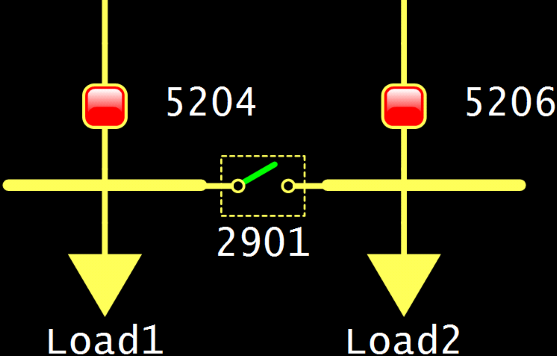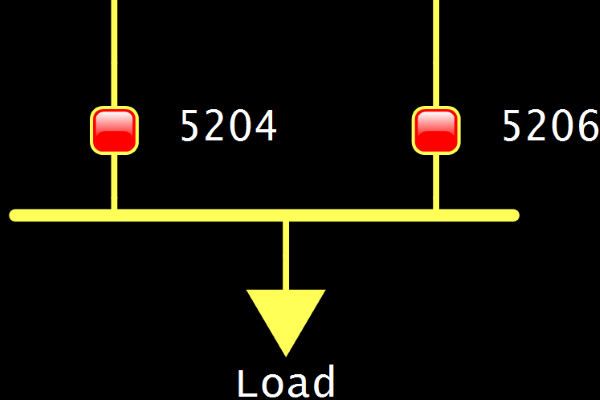In architectures where one single Load can be fed by two Bars and there is a Switch with automatic switching between these Bars, users must model these Bars as a single one.
In the situation demonstrated on the next figure, where the Switch 2901 contains a mechanism that forces it to close when one of its Terminals indicate a lack of voltage, the system must be modeled differently.

Architecture with two Loads
In this case, this set must be considered by the Load Shedding Module as a single block fed by two Breakers. This is needed because the Load Shedding Module considers that, during an opening of Breaker 5204, the Load Load1 is de-energized, which in this case it is not going to happen.
Therefore, for the Load Shedding system to be structured, users must create the model as presented on the next figure.

Architecture with a single Load
In this case, Breaker's configuration is the same, and the Load Load is now the sum of Loads Load1 and Load2. In fact, this situation forces these two Loads to be always selected together for shedding.